Volcano Basics
Volcanic Eruptions
Factors that determine the violence of an eruption
- Temperature of the magma
- Composition of the magma
- Dissolved gases in the magma
Viscosity, Temperature and Water Content of Magmas
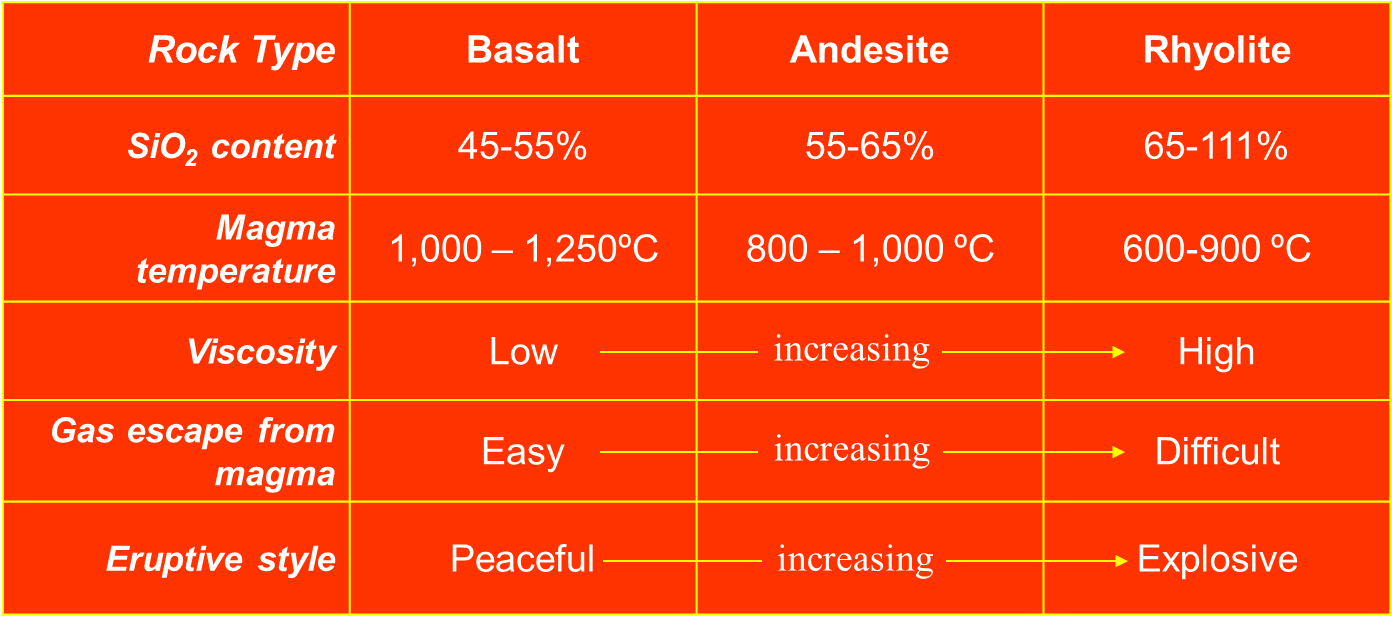
Tectonic Settings of Volcanoes
| Why more volcanic activity at spreading centers? | Why less volcanic activity at subduction zones? |
|---|---|
|
|
Volcano Plumbing
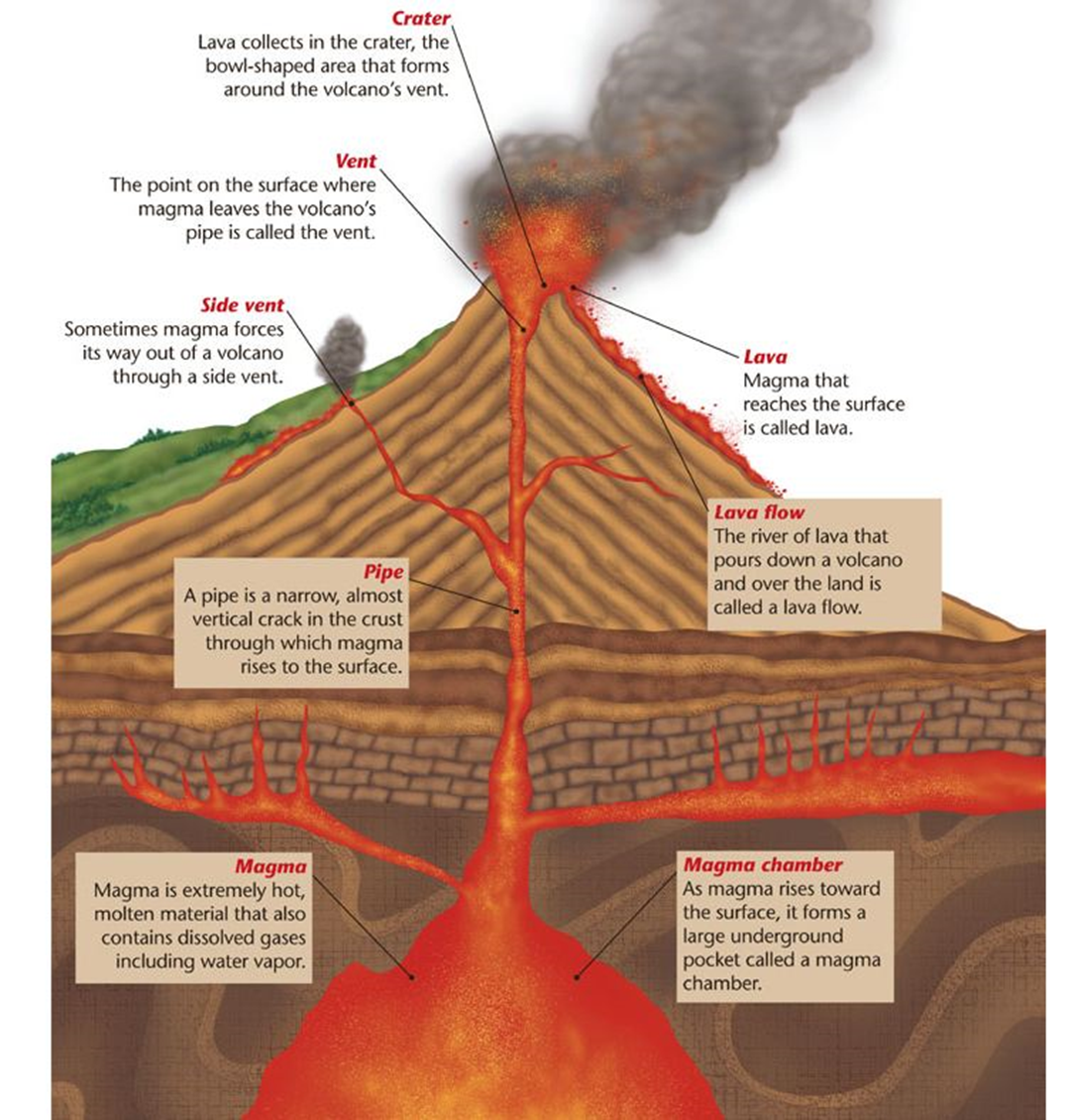
Vents
Vents are were the magma exits the subsurface and flows over the surface of the Earth. There are two basic types:
- Crater or summit eruption
- Magma rises to the surface via a conduit
- Fissure eruption
- “curtain of fire.”
- evolve into discrete vents.
Craters
Craters are bowl-shaped depressions atop a volcano. Craters are up to 500 m across and 200 m deep, and form as erupted lava piles up around the vent. Accentuated by summit collapse into conduit.
Caldera
Calderas are a gigantic volcanic depression (1-10s of kilometers across). They form when a volcano explosively erupts and the magma chamber empties. This undermines the summit and the volcano collapses into the magma chamber.
Shapes and Sizes
Magma type governs volcano shape & size.
- Categories:
- Shield volcanoes – Largest.
- Stratovolcanoes – Intermediate in size.
- Cinder cones – Smallest

Types of Volcanoes
Shield - Shield volcanoes are broad, slightly domed in shape, very large in size. They are primarily made of basaltic (fluid) lava and erupts peacefully. Example: Hawaiian Islands
Stratovolcano - Most stratovolcanoes are adjacent to the Pacific Ocean due to subduction zones. They are formed from layers of andesitic / rhyolitic lavas & pyroclastics. These volcanoes erupt explosively. Example: Vesuvius, Naples, Italy
Cinder cones - Cinder cones are built from ejected lava fragments. They have a steep slope angle and frequently occur in groups. Example: Pu'u O'o, Hawai'i
Lava dome - Lava domes form after an explosive eruption on a stratovolcano, and are comprised of a bulbous mass of congealed lava. Most are associated with explosive eruptions of gas-rich magma. Example: Unzen lava dome, Mt. Unzen, Japan.

Fissure eruptions and lava plateaus - Fissure eruptions (aka flood basalts) are formed when basaltic lava is extruded from crustal fractures. Incredibly large volumes of lava pour out of fissures over 2-3 million years and create features such as the Siberian Traps. These flood basalts can affect global climate. How? Volcanoes not only erupt lave but also gases. With large eruptions - or, in this case, eruptions that last a long time - enormous amounts of gases can be released. Gases. such as sulfur dioxide can cause global cooling while carbon dioxide can cause global warming.
Eruptive Style
| Effusive eruptions | Explosive eruptions |
|---|---|
Produce lava flows; peaceful.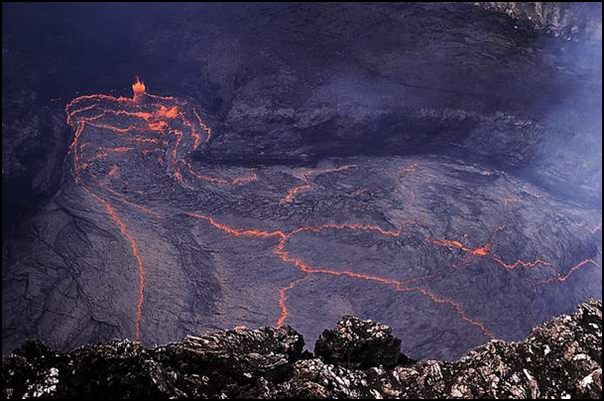 |
Blows up.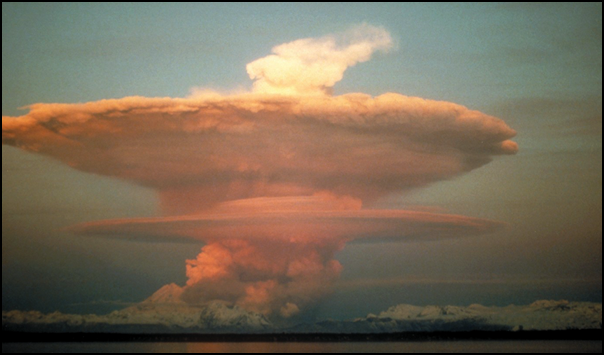 |
Effusive eruptions - Produces lava flows. Lava flows stream away from vents and lava lakes can form around the vent. Can produce huge lava fountains when squeezed through fissures.
Explosive eruptions - Produce pyroclastic flows. These flows are caused by gas pressure in the more viscous magma in the magma chamber. When erupted, the pressure is released explosively. These flows help to create stratovolcanoes.
Phreatomagmatic eruptions - These are the most dangerous type of eruption. They occur when magma interacts with water. Some eruptions can be cataclysmic. Examples: Santorini, Krakatau.
Controls on Eruptive Style
Viscosity – Controls the ease of lava flow.
Gas Pressure – Greater pressure favors explosive style.
Environment – Where the eruption occurs is important.
What comes out of a volcano?
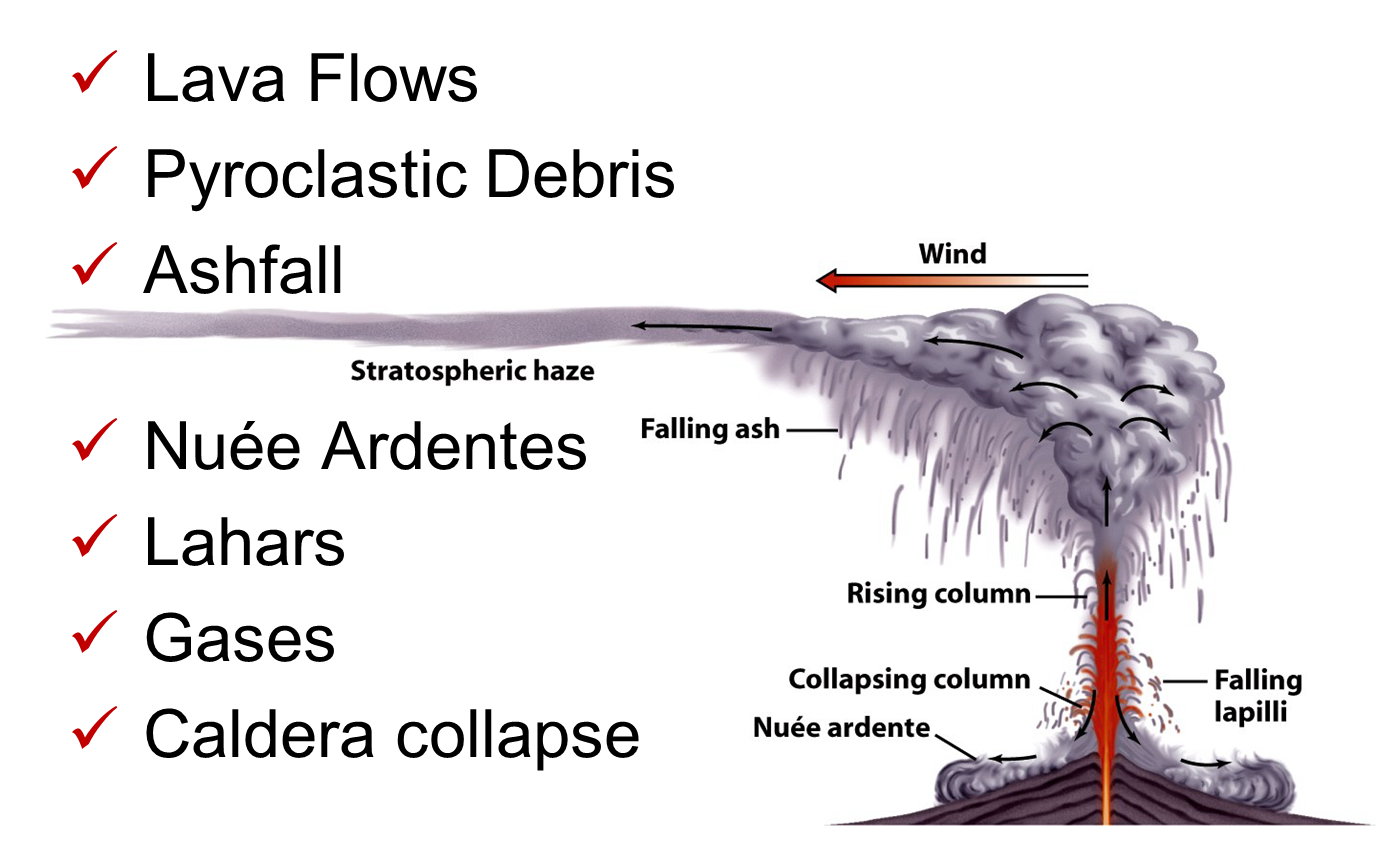
Volcanic Hazards
- Direct
- Lava Flows
- Eruptions / Explosions
- Pyroclastic Debris
- Ashfall
- Nuée Ardentes
- Mudflows/Lahars
- Gas
- Caldera Collapse
- Indirect
- Tsunami
- Famine
- Climate change
Volcano Fatalities Last 500 Years
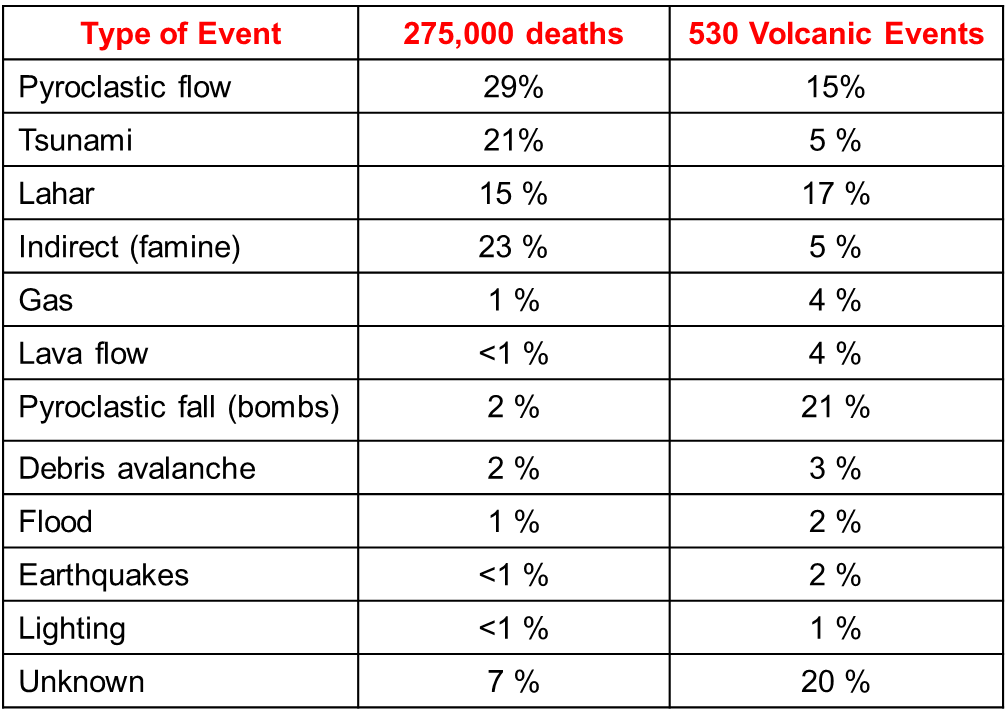
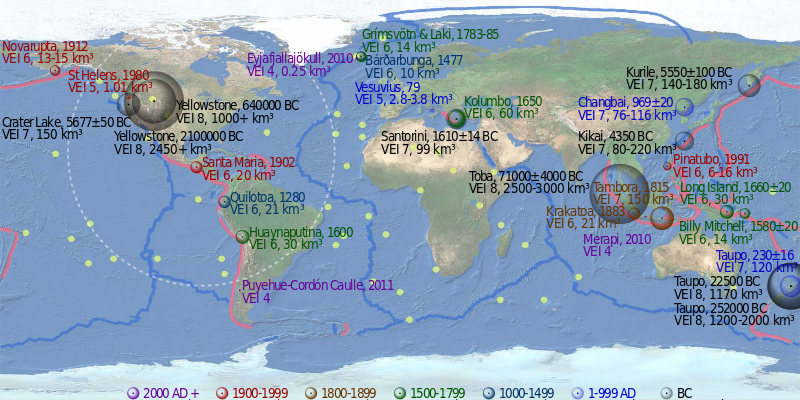
Map of notable volcanic eruptions. The apparent volume of each bubbles is linearly proportional to the volume of tephra ejected (i.e. their radius is linearly proportional to the cube root of the volume of tephra ejected), colour-coded by time of eruption as in the legend. Pink lines denote convergent boundaries, blue lines denote divergent boundaries and yellow spots denote hotspots. The dashed circle shows the equivalent ejection from the Chicxulub impact (200000+ km³). source
<< back |
||
